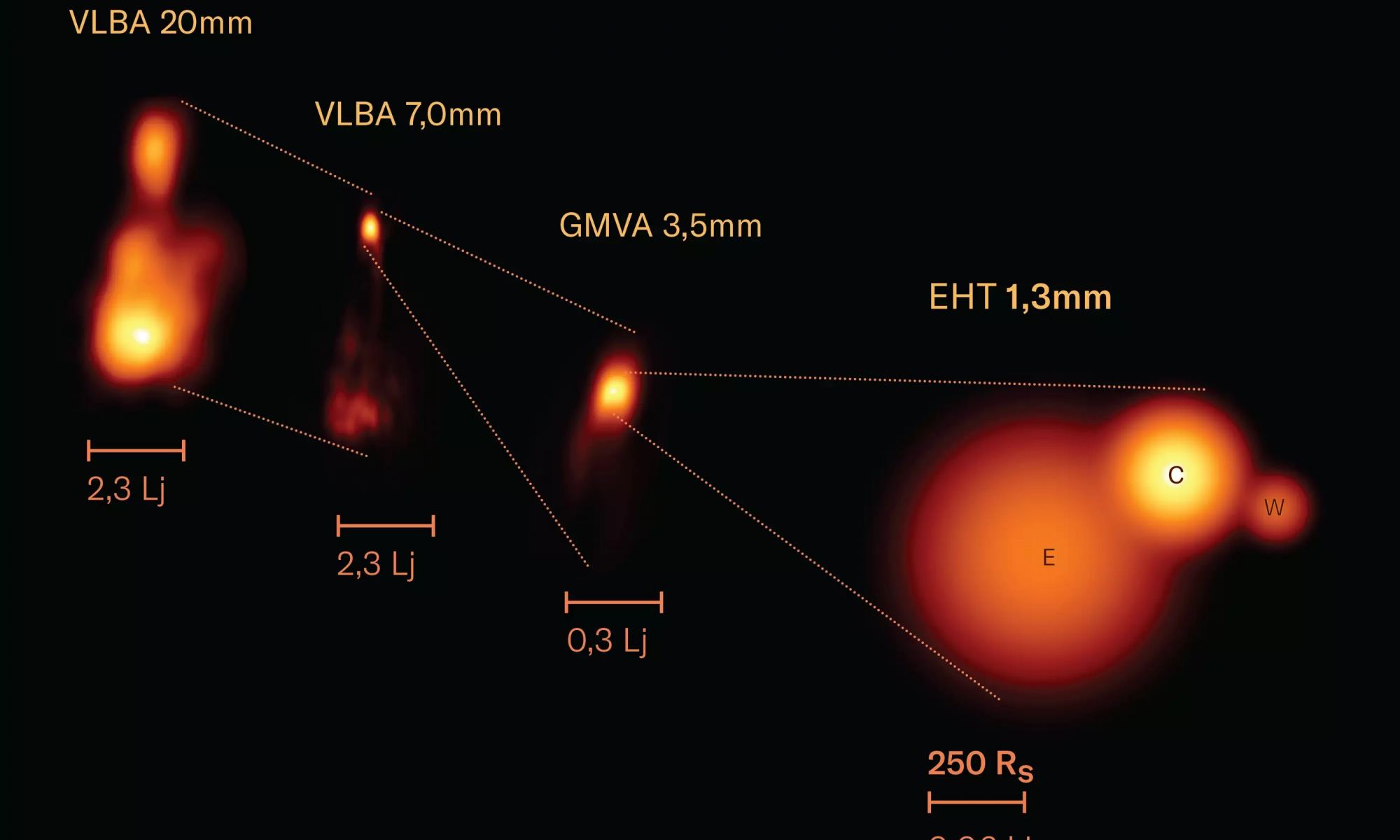Although supermassive black holes are common throughout the Universe, we don’t have many direct images of them. The problem is that while they can have a mass of millions or billions of stars, even the nearest supermassive black holes have tiny apparent sizes. The only direct images we have are those of M87* and Sag A*, and it took a virtual telescope the size of Earth to capture them. But we are still in the early days of the Event Horizon Telescope (EHT), and improvements are being made to the virtual telescope all the time. Which means we are starting to look at more supermassive black holes.
The latest observations focus on a black hole region known as 3C 84, or Perseus A. It is a radio-bright source in a galaxy more than 200 million light-years away. Even the latest iteration of the EHT can’t resolve the horizon glow of the black hole as we’ve done with M87* and Sag A*, but it can see the bright region surrounding the black hole, where magnetic fields are particularly intense.

The 3C 84 black hole is located in the galaxy NGC 1275, which is part of the Perseus cluster. The galaxy is not just distant, it also has a central region rich in dust, which shrouds the black hole. Optical light can’t penetrate the region, but radio light can. The Event Horizon Telescope can also capture the polarization of radio light coming from the area. This is important because charged particles within a strong magnetic field emit polarized light. By mapping this polarization astronomers can study magnetic fields.
One focus of this work is to see how supermassive black holes can generate powerful jets that stream from the black hole at nearly the speed of light. Magnetic fields are key. As ionized matter falls into a black hole it can bring with it strong magnetic fields. These fields can pin to the accretion disk of a black hole, which intensifies fields in the region that it becomes difficult for the black hole to capture more matter. This is known as a magnetically arrested disk.
One idea is that as the magnetically arrested disk rotates around the black hole, magnetic field lines become twisted, winding ever tighter and trapping magnetic energy. The release of this energy through magnetic realignment could power the formation of ionized jets. While such a magnetic realignment hasn’t been observed, this study shows that we might be able to capture such an event.
Reference: Paraschos, G. F., et al. “Ordered magnetic fields around the 3C 84 central black hole.” Astronomy & Astrophysics 682 (2024): L3.

